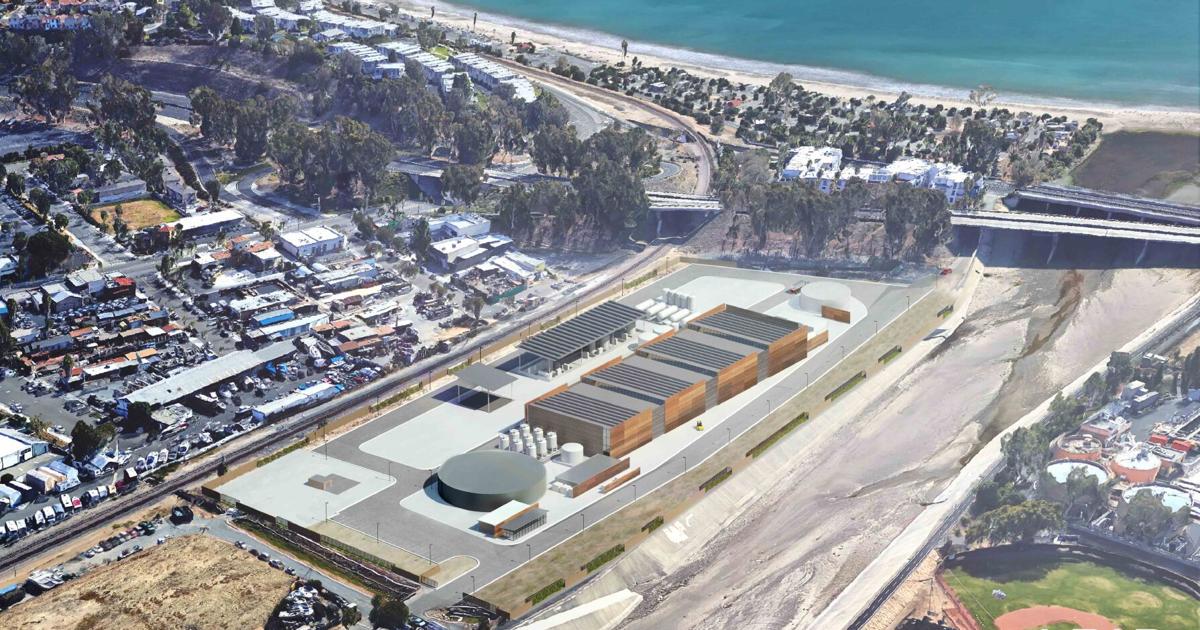
The Potential of the Doheny Ocean Desalination Project

The South Coast Water District (SCWD) has announced a new agreement between Southern California water agencies that has the potential to earn roughly $39.9 million over the next 15 years for the production of water through its Doheny Ocean Desalination Project. This project aligns with the Sustainable Development Goals (SDGs) by addressing Goal 6: Clean Water and Sanitation.
Project Overview
- The seawater desalination plant, with an estimated cost of $140 million, aims to produce 5 million gallons of water per day (MGD), equal to 5,600 acre-feet (AF) per year.
- The Metropolitan Water District of Southern California Board of Directors authorized entry into a Local Resources Program (LRP) Agreement with SCWD and the Metropolitan Water District of Orange County (MWDOC) to provide incentive payments for producing up to 5,600 AF annually.
- The project aims to supplement Metropolitan’s imported potable water and increase the use of local water supplies.
Incentive Payments
- SCWD chose a “sliding scale” option for the incentive payment structure, which would provide up to $475 per acre-foot produced per year.
- The project is planned to have a minimum online percentage of 95%, ensuring a minimum annual delivery of 5,321 AF, but it is capable of producing and distributing 5,600 AF per year.
Benefits and Progress
The project will reduce future demands on the agency for imported water supplies and decrease the burden on the agency’s infrastructure. It has received support from numerous regulatory agencies, allowing the district to move forward with construction.
Approval and Timeline
- The MWDOC’s Board of Directors approved the LRP at an April 3 meeting.
- The Metropolitan board approved the project on April 9.
- SCWD anticipates the desalination plant will begin producing water in 2028.
Conclusion
The Doheny Ocean Desalination Project is a significant step towards achieving SDG 6: Clean Water and Sanitation. It not only provides a sustainable source of water but also reduces reliance on imported supplies. More information about the project can be found at scwd.org.
SDGs, Targets, and Indicators Analysis
1. Which SDGs are addressed or connected to the issues highlighted in the article?
- SDG 6: Clean Water and Sanitation
- SDG 9: Industry, Innovation, and Infrastructure
- SDG 11: Sustainable Cities and Communities
The article discusses the potential earnings from a seawater desalination project, which is directly related to SDG 6 – Clean Water and Sanitation. It also mentions the project’s aim to reduce future demands on imported water supplies and decrease the burden on infrastructure, aligning with SDG 9 – Industry, Innovation, and Infrastructure. Additionally, the project’s implementation contributes to SDG 11 – Sustainable Cities and Communities by diversifying the water portfolio and increasing water reliability in the region.
2. What specific targets under those SDGs can be identified based on the article’s content?
- Target 6.4: By 2030, substantially increase water-use efficiency across all sectors and ensure sustainable withdrawals and supply of freshwater to address water scarcity.
- Target 9.1: Develop quality, reliable, sustainable, and resilient infrastructure, including regional and transborder infrastructure, to support economic development and human well-being, with a focus on affordable and equitable access for all.
- Target 11.5: By 2030, significantly reduce the number of deaths and the number of people affected and substantially decrease the direct economic losses relative to global gross domestic product caused by disasters, including water-related disasters, with a focus on protecting the poor and people in vulnerable situations.
The article highlights the production of water through the desalination project, which contributes to Target 6.4 of ensuring sustainable withdrawals and supply of freshwater. The project’s aim to reduce future demands on imported water supplies and improve infrastructure aligns with Target 9.1. Additionally, by diversifying the water portfolio and increasing water reliability, the project contributes to Target 11.5 by reducing the vulnerability of the region to water-related disasters.
3. Are there any indicators mentioned or implied in the article that can be used to measure progress towards the identified targets?
- Indicator 6.4.1: Change in water-use efficiency over time.
- Indicator 9.1.1: Proportion of the rural population who live within 2 km of an all-season road.
- Indicator 11.5.1: Number of deaths, missing persons, and directly affected persons attributed to disasters per 100,000 population.
The article does not explicitly mention these indicators, but it implies progress towards these targets. The project’s production of water through desalination can be used to measure water-use efficiency (Indicator 6.4.1). The improvement in infrastructure and increased access to water resources can be measured by the proportion of the population benefiting from the project (Indicator 9.1.1). The project’s aim to reduce vulnerability to water-related disasters aligns with Indicator 11.5.1.
4. Table: SDGs, Targets, and Indicators
| SDGs | Targets | Indicators |
|---|---|---|
| SDG 6: Clean Water and Sanitation | Target 6.4: By 2030, substantially increase water-use efficiency across all sectors and ensure sustainable withdrawals and supply of freshwater to address water scarcity. | Indicator 6.4.1: Change in water-use efficiency over time. |
| SDG 9: Industry, Innovation, and Infrastructure | Target 9.1: Develop quality, reliable, sustainable, and resilient infrastructure, including regional and transborder infrastructure, to support economic development and human well-being, with a focus on affordable and equitable access for all. | Indicator 9.1.1: Proportion of the rural population who live within 2 km of an all-season road. |
| SDG 11: Sustainable Cities and Communities | Target 11.5: By 2030, significantly reduce the number of deaths and the number of people affected and substantially decrease the direct economic losses relative to global gross domestic product caused by disasters, including water-related disasters, with a focus on protecting the poor and people in vulnerable situations. | Indicator 11.5.1: Number of deaths, missing persons, and directly affected persons attributed to disasters per 100,000 population. |
Behold! This splendid article springs forth from the wellspring of knowledge, shaped by a wondrous proprietary AI technology that delved into a vast ocean of data, illuminating the path towards the Sustainable Development Goals. Remember that all rights are reserved by SDG Investors LLC, empowering us to champion progress together.
Source: picketfencemedia.com

Join us, as fellow seekers of change, on a transformative journey at https://sdgtalks.ai/welcome, where you can become a member and actively contribute to shaping a brighter future.






